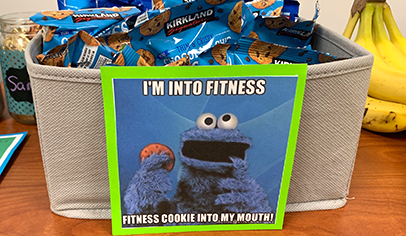When children get to middle school, everything changes. Or so it can seem. The school is bigger. Children no longer have the same teacher all day. Homework increases. And of course, this is a time when they go through a lot of personal changes.
Something else often changes at the middle school level, too. Parents become much less likely to be involved with their children’s education. Even parents who were very involved at the elementary level tend to step back.
How do parent group leaders break through this involvement barrier to get parents connected to the school and the PTO? One key is effective communication. Getting the right message out to the right people at the right time can make the difference in building involvement.
What are the secrets to effective communication between parent groups and middle school parents? How can effective communication actually increase parent involvement? We asked the leaders of highly successful middle school parent groups around the country to help us isolate the most important communications factors.
Here is what we learned about message content, media choices, meeting attendance, and how it all relates to increasing parent involvement in middle schools.
Two Key Messages
At Pennwood Middle School in Yardley, Pa., the message for parents is “We welcome as much or as little as people want to give of their time,” says Liz Siporin, PTO copresident. This large middle school, with more than 1,000 students, has an attitude of friendliness that is intentionally communicated in their meetings, regular emails, and in their monthly newsletter.
A welcoming attitude toward all parents is an essential first step, and it must be embedded in all messages. The ideal scenario, of course, occurs when the administration also shares in making the middle school a welcoming place for parents. When the administration is not welcoming, the parent group’s challenge becomes all the greater.
A second important message emphasized by PTO leaders we interviewed is to let parents know that even an hour contribution is valuable and appreciated. “We do have parents who take on just one small job because that is all they can do, and we all benefit because of their contribution,” says Siporin.
The Message Must Go Through
Many middle school parent group leaders have realized that they just can’t count on communications making it from the kids’ backpacks into their parents’ hands. So mailing home a hard-copy newsletter seems to be an expense middle school groups are willing to make. One middle school PTO tried switching exclusively to an emailed version of its newsletter last year, but this year has returned to the printed version. Their sense is that emailed messages are an essential component of their media mix, but the paper newsletter may be better in ensuring that important dates get onto the family calendar.
All the parent group leaders we talked to have encouraged parents to sign up for email communications sent out regularly from the parent group. This communication method is popular for many obvious reasons: it’s inexpensive, easy to manage, and can be effective in reaching parents relatively quickly. It would be a mistake to rely on it to the exclusion of other methods, though.
Says Siporin, “We use a variety of forms of communication. We do all that we can so at some point, in some way, most people will hear what’s going on.” This is important. Don’t just say it once or even twice. In advertising circles, the rule of thumb is that people must hear a message five to seven times before they take action.
Other methods of communication used successfully by parent groups include post cards, bulletin boards, signs, and flyers. Additionally, many parent groups have their own website or a presence on the school website. Parent groups usually use the local community newspaper as a way to reach parents. Not many are using the local cable TV stations, although this, too, could be an effective medium in places where cable viewership is high.
Matching the Message
For your communications to be most effective, it helps to understand parents’ viewpoints and needs. Shelley Connolly is president of the Rosemont Ridge Middle School PTO in West Linn, Oregon, PTO Today’s 2004 Parent Group of the Year. She says that a few short years ago, parents were holding themselves back from participating at Rosemont Ridge, even though local elementary schools had high involvement. The reason? Parents “didn’t know how to be involved” at the middle school level, Connolly says.
When the PTO began to provide appropriate mechanisms for parental involvement, parents were delighted. The group ran “fun blasts”—social gatherings with activities chosen by the kids themselves; organized welcome overnights for sixth-graders; put together an eighth-grade career day; set up a grade parent volunteer program; launched a program to curb bullying; set up monthly teacher appreciation events; and more.
“Parents appreciated the opportunities for involvement and they wanted to contribute. We provided ways for parents to get into the school, and this gave them insight into what their kids were doing,” Connolly says.
For this approach to be most effective, however, there may need to be some parental education to precede and support the effort. Not all parents realize the important connection between their involvement in their middle school child’s educational life and their child’s educational success.
Often parents are working under a misperception that once their child is in middle school, they should pull back. In fact, research has shown that this is not the case at all. But parents should expect that the ways that they will get involved will be different at the middle school. Successful middle school parent groups repeat this message not once, not twice, but in an ongoing effort.
Once parents begin to receive the message about the importance of their involvement, they need to be informed about what opportunities for involvement exist. Your communications effectiveness, then, can be enhanced when you connect the activities and volunteer opportunities with the facts about why parental involvement is important. For instance, grades and test scores rise for middle school children when parents are involved in their education. Discipline problems decline at home and school, attendance improves, and children with involved parents are more likely to graduate and go on to higher education.
Fear and Fun
Several PTO presidents mentioned that many parents have a fear of becoming over-committed to PTO projects. Some parent groups have increased participation by creating clear boundaries for the volunteer jobs so that parents can feel comfortable knowing the size of the job for which they are volunteering. Clearly communicating this approach allows PTOs to negate this fear factor.
The fun factor is a hidden advantage that too many parent groups dont use. Parents want to get involved in fun events and activities—and if the activities include their young teenagers and other families, all the better! If fun is one of the byproducts for parent volunteers, make sure this is communicated in all that you do. Tell people, show people, create a buzz about the fun that is available, and watch the parents come out!
Meeting Attendance
At many middle schools, the principal attends the meetings and uses that forum as a way to be in touch with the parent community. In this way, a PTO that is plugged in to the administration finds its meetings can be a communications channel for parents to find out what is going on in the school. Do parents take advantage of this opportunity to use the PTO meetings as a way to stay up on what is happening? Not enough, many PTO leaders say.
“I just can’t understand why more people don’t come to our meetings,” says Linda Golden, president of the Parent Advisory Council at the Wilmington Middle School, Wilmington, Mass. “We do have parents stepping up to help out when we need volunteers, but our meeting attendance is low and that baffles me.”
The PTOs we spoke with recommended being attentive to keeping the meeting on time, on agenda, and content-rich. However, few of them boast of high attendance. There is a communications opportunity hidden in this low attendance fact.
Consider using other media options to get the important information covered at these meetings out to parents. You can make your newsletter and other communications more compelling by including important information about whats going on at school. Then you can focus on gathering the parents in for the fun events with their kids and important events with other parents.
Is measuring attendance at PTO meetings the best yardstick for parental involvement? No. It’s just one piece of the puzzle and far from the most important one.
Personalize It!
While some middle school PTOs say they do less than the equivalent groups in elementary schools, the Tri North Middle School in Bloomington, Indiana, has “far more ways for parental involvement than at the elementary level,” says Donna Niese, PTO chair. This middle school parent group raises more money and offers more programs. Some programs, such as their special community service programs and student assistance programs, are beyond many typical PTO offerings. “At this point, our PTO is a well-oiled machine,” says Niese. “Each year we get the committee chairs in place, and then it runs easily.”
That is a key at the middle school level. It seems that the PTOs enjoying the most parental involvement are the ones with committees (or subcommittees) focused on particular areas or events, and whose chairmen have developed personalized volunteer lists. Gathering these personal lists requires several of the already named steps, like advertising that jobs are sized “predictable.” From there, the committee chairmen develop personal connections that make all the difference. There’s a place for broadcast email blasts, but doing a broad email blast requesting volunteer participation may not be it. That’s the time for a more personalized approach.
Most parent groups set out with important goals that enrich the parent and student communities alike. Review your communications strategies, and make sure that you’re using all your available channels most effectively. Verify that you’re communicating the image that you intend; make sure your communication gets the attention that it deserves so that it is, by design, enhancing all the good work that you do.

























